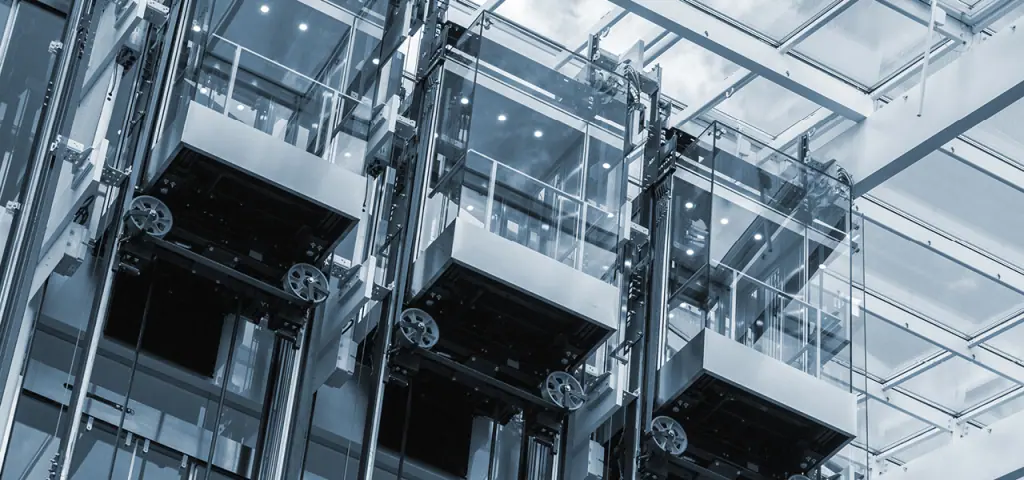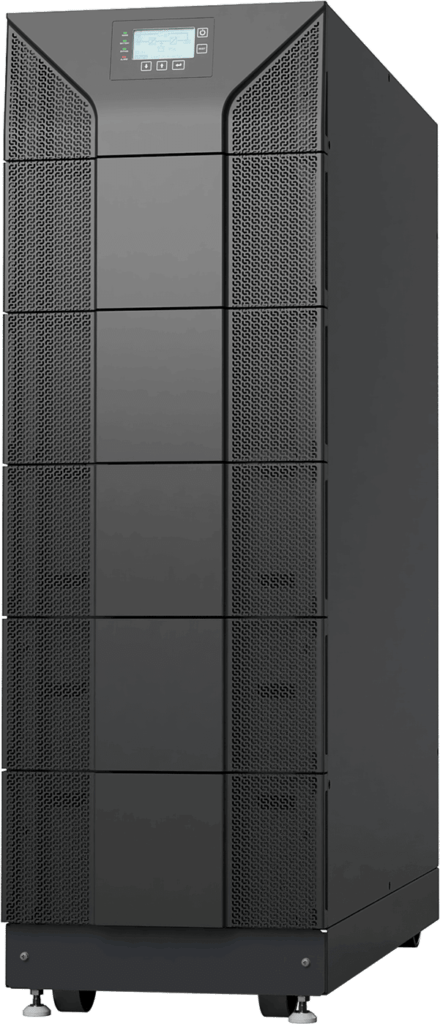Taking the elevator safely to the next floor despite a power failure

So that the elevator still runs despite a power failure: Advantages of a good UPS system
Power failure, the elevator gets stuck halfway up, the passengers are trapped. Sooner or later in the film, one of the passengers opens a hatch on the ceiling of the elevator, climbs up the oil-smeared steel side and pries open the doors to the next floor. A heroic moment, but actually a movie cliché. Because if a building operator has taken proper precautions, the UPS system kicks in and supplies the elevator with the necessary power for a final evacuation ride to the next floor, where everyone can get out safely and without oil flecks.
A good UPS system: a question of safety and money
An uninterruptible power supply (UPS for short) system also makes sense away from elevators. Peter Gaßner, project manager for UPS systems at Wöhrle Stromversorgungssysteme, calculates that one second of power failure can often mean a loss of €300,000 to €400,000. "A ceramics manufacturer in Brandenburg," says Gaßner, "recently had a
Power failure, which led to a sharp drop in the kilns' output. The entire firing, i.e. the goods in the kiln, was ruined." A UPS system could have prevented this, but the ceramics manufacturer did not have one. Gaßner: "In my professional experience, it's not the major power failures that are the problem, because they happen quite rarely. More problematic are the so-called mains wipers: short interruptions, often in the range of 10-12 milliseconds. This is a major problem for critical infrastructure that must not fail. The quality and reliability of the power grids
companies don't have any influence." A good UPS system therefore goes far beyond elevators that have come to a standstill. In the event of a fire in the building, however, it depends on whether or not an elevator can carry out an evacuation journey despite a power failure, because then human lives are at stake.
How does a UPS system work
In the case of the elevators, the UPS system starts automatically after three to five seconds of power failure, supplies the broken-down elevator with power and thus initiates an evacuation ride of approx. 20 seconds to the next floor. If there are several elevators in a building, the UPS supplies power to one elevator after the other until all evacuation trips have been completed. The UPS can do this because it is independent of the main grid that supplies the building and all the devices and systems in it. In a sense, it produces a second grid that runs permanently but independently in parallel to the main grid. If the main grid fails, the UPS grid takes over to supply the critical infrastructure with the necessary power. The UPS system, in turn, is supplied with power via its own battery. What a UPS should be able to do and where it is installed can only be answered individually, as the requirements for the UPS of a ceramics manufacturer with kilns are not the same as those of an insurance company with large IT systems. The location also plays a decisive role, as the batteries - the heart of the uninterruptible power supply - are "sensitive creatures", as Peter Gaßner from Wöhrle affectionately puts it.
There is no such thing as "the" UPS, but there is a customized UPS system
UPS batteries are sensitive to heat, which is why their service life can be halved at temperatures above 30 degrees Celsius. Such problems can be easily avoided, as there are special batteries that can withstand 40 degrees Celsius.
Knowing the temperatures at the UPS installation site is therefore essential, and since every room and every company is unique, the only sensible approach is to carry out an on-site survey. Not only are any machines potential sources of heat, but also the elevator shaft itself, in which the UPS motor is installed: The heat generated by friction as the elevator travels has difficulty escaping from the shaft. In addition, space is notoriously limited in narrow elevator shafts, which is why not every model of UPS system fits every shaft. But a sprinkler system can also pose a risk to the UPS system, and what is the point of one emergency system paralyzing another in a crisis if it is installed in the wrong place? Wöhrle Stromversorgungssysteme GmbH has therefore made it its principle to apply a multi-stage procedure to determine the respective requirements:
- On-site visit and inspection of the premises where the UPS will be installed
- Inclusion of all spatial, technical or mechanical obstacles that could hinder the reliable operation of the UPS
- Determining the customer's needs and wishes in a personal meeting
- Advice on all UPS installation options and development of the best possible solution for the individual customer
- Regular maintenance of the UPS system to ensure its functionality in the event of an emergency

